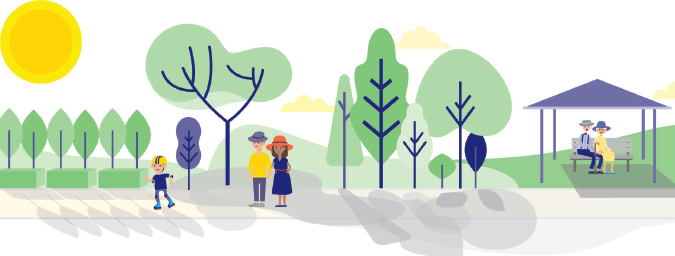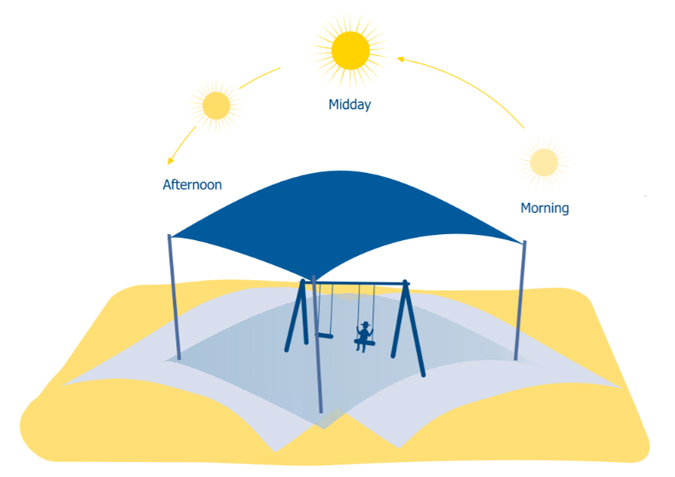Shade
The major cause of skin cancer is exposure to UV radiation from the sun. With good protection against UV radiation, most cases of skin cancer can be prevented.
Shade is one of the easiest ways to protect against UV radiation. Good-quality shade can reduce UV exposure by up to 75%.
The provision of shade is also an important component in the design and creation of safe and healthy communities.
What is quality shade?
Well-designed and correctly positioned shade provides protection from UV radiation where it is needed, at the right time of day and at the right time of year.
Well-designed shade ensures that:
- The outdoor space is comfortable to use in all seasons.
- A barrier protects users from direct and indirect sources of UV radiation.
- The shade is attractive, practical and environmentally friendly.
Shade can be natural or built:
- Natural shade: trees with a canopy that is dense and close to the ground.
- Built shade: stand-alone, portable or add-on structures positioned to provide shade during the middle of the day when UV is highest, or positioned to provide shade when the area is in highest use.

Benefits of quality shade and green spaces
Health benefits
- Reduces UV exposure and helps prevent skin cancer
- Improves thermal comfort in times of heat
- Increases recreation and physical activity
- Reduces obesity and risk of chronic disease
- Improves mental health and wellbeing
Environmental benefits
- Reduces build-up of heat in urban areas
- Reduces air pollution
- Reduces water evaporation, soil erosion and storm water run-off
- Reduces atmospheric carbon
- Maintains animal habitat and biodiversity
Social and economic benefits
- Improves social and community connection
- Reduces neighbourhood crime
- Better placemaking
- Reduces socioeconomic and health inequities
- Increases land and property value
- Reduces energy usage and costs
Shade planning and design considerations
It is important to note the different areas of your outdoor space that may require shade. These areas may include:
- active playground areas for ball games and free play
- passive playground areas for eating lunch and socialising or quiet activities
- transition zones between indoor and outdoor areas, such as a verandah
- assembly areas
- canteen or bus stop areas
- Specialist sports facilities such as swimming pools, tennis courts and sports fields.
While each area has its own shade requirements, they should be considered within the context of the whole site.
It is also important to consider the different shade that will be produced throughout different times of the day (as illustrated below). The shade canopy should extend at least one metre past the areas of use, to make sure adequate shade can be provided all day.

Implementing shade in the community
Read our easy-to-follow steps and important considerations for implementing shade in your schools and childcare centres.
ShadeSmart
Are you a landscape architect, planner or built environment professional?
Read about a new accredited training course where you can learn the latest in best practice shade design.
Read moreBenchmarking shade in NSW playgrounds
Learn about a research project led by Cancer Institute NSW to explore the availability and quality of natural and build shade in NSW council and school playgrounds.
Read moreResources
-
A factsheet about the importance of shade Download PDF304kB
-
A guide for local governments on how to incorporate shade provision Download PDF121kB
-
Guidelines for shade development in New South Wales Download PDF4.48MB
-
Case studies of successful shade implementation Download PDF901kB
-
Shade advocacy toolkit Download PDF700kB
-
Benchmarking shade in NSW playgrounds Go to PDF




